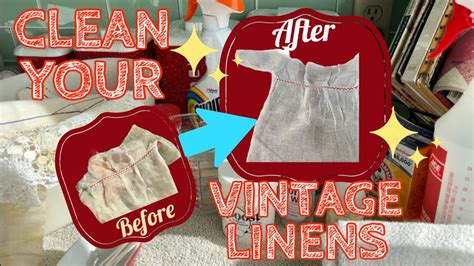How To Remove Stains From Old Linens
Ronan Farrow
Mar 25, 2025 · 4 min read

Table of Contents
How to Remove Stains from Old Linens: A Comprehensive Guide
Old linens, with their history and charm, often carry the marks of time—stains. But don't let these blemishes banish your cherished heirloom pieces! With the right techniques, you can revive your old linens and restore their former glory. This guide provides a comprehensive approach to stain removal, tailored to the delicate nature of antique and vintage fabrics.
Understanding Your Linens
Before diving into stain removal, it's crucial to identify the fabric type. Different materials require different cleaning methods. Is it linen, cotton, silk, or a blend? Knowing the fabric composition will prevent damage and ensure effective stain removal. Check for any care labels – even if faded, they might offer valuable clues.
Identifying the Stain
The type of stain dictates the best cleaning strategy. Is it a wine stain, a grass stain, a rust stain, or perhaps an ink stain? Different stains react differently to various treatments. Accurate identification is the first step to successful removal.
Pre-Treatment: The Key to Success
Pre-treating the stain is vital, especially for older linens. This step loosens the stain and prepares the fabric for the main cleaning process.
Gently Brush Away Loose Debris
Before applying any cleaning solution, gently brush away any loose dirt, dust, or debris surrounding the stain using a soft-bristled brush. This prevents spreading the stain further.
Test in an Inconspicuous Area
Always test your chosen cleaning method on a hidden area of the linen first. This precaution ensures that the cleaning agent won't damage the fabric's color or texture. Old linens can be delicate, and a spot test prevents irreversible harm.
Stain Removal Techniques: A Step-by-Step Approach
For Wine Stains:
- Act Fast: Fresh wine stains are easier to remove than older ones.
- Blot (Don't Rub): Gently blot the stain with a clean cloth or paper towel to absorb as much wine as possible. Rubbing spreads the stain.
- Boiling Water Method (for fresh stains): Hold the stained area taut over a bowl and pour boiling water directly onto the stain from a height. The boiling water can sometimes lift the stain completely.
- Soaking (for older stains): Soak the stained area in cold water for a few hours, then gently launder.
For Grass Stains:
- Dish Soap Solution: Apply a small amount of mild dish soap directly to the stain.
- Gently Rub: Gently rub the soap into the stain with your fingers.
- Rinse and Launder: Rinse thoroughly with cold water and launder as usual.
For Rust Stains:
Rust stains are notoriously stubborn. This method requires patience:
- Lemon Juice and Salt: Create a paste of lemon juice and salt.
- Apply Paste: Apply the paste generously to the rust stain.
- Sun Exposure: Let the paste sit in direct sunlight for several hours, or even overnight. The sun's UV rays help break down the rust.
- Rinse and Launder: Rinse thoroughly with cold water and launder as usual.
For Ink Stains:
- Isopropyl Alcohol: Dab the stain gently with isopropyl alcohol (rubbing alcohol). Test in an inconspicuous area first!
- Blot and Repeat: Blot frequently with a clean cloth to absorb the ink. Repeat until the stain fades.
- Launder: Launder as usual, checking to ensure the stain is completely gone.
After-Care: Handling Your Cleaned Linens
Once you've removed the stain, proper aftercare is essential to maintain the longevity of your old linens:
- Gentle Washing: Wash your old linens gently, preferably by hand or on a delicate cycle. Avoid harsh detergents.
- Air Drying: Air drying is the best method to prevent shrinkage and damage. Avoid using a machine dryer, especially for delicate fabrics.
- Ironing (optional): If ironing is necessary, use a low heat setting and a pressing cloth to protect the fabric.
Preventing Future Stains
Prevention is always better than cure. By following these simple precautions, you can minimize the risk of future stains on your cherished linens:
- Immediate Attention: Address spills and stains as quickly as possible.
- Protective Measures: Use placemats and coasters to protect your linens from spills and everyday wear.
By following these methods and taking the necessary precautions, you can effectively remove stains from old linens, preserving their beauty and extending their lifespan. Remember to always prioritize patience and gentleness when handling antique and vintage materials. Remember to always test your cleaning solution on an inconspicuous area first!
Featured Posts
Also read the following articles
| Article Title | Date |
|---|---|
| How To Price Items For An Estate Sale Pdf | Mar 25, 2025 |
| How To Preserve Seed Potatoes | Mar 25, 2025 |
| How To Remove Rust Stains From Pool | Mar 25, 2025 |
| How To Open A Frozen Window | Mar 25, 2025 |
| How To Make A Purple People Eater | Mar 25, 2025 |
Latest Posts
Thank you for visiting our website which covers about How To Remove Stains From Old Linens . We hope the information provided has been useful to you. Feel free to contact us if you have any questions or need further assistance. See you next time and don't miss to bookmark.
